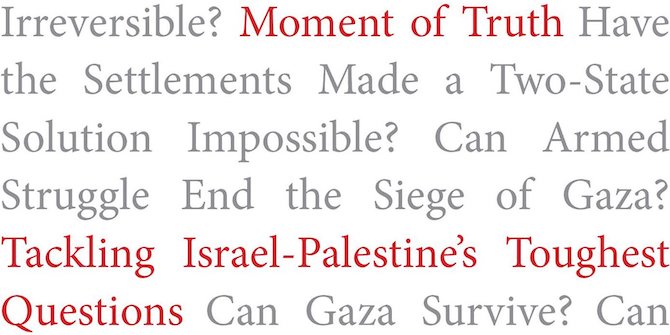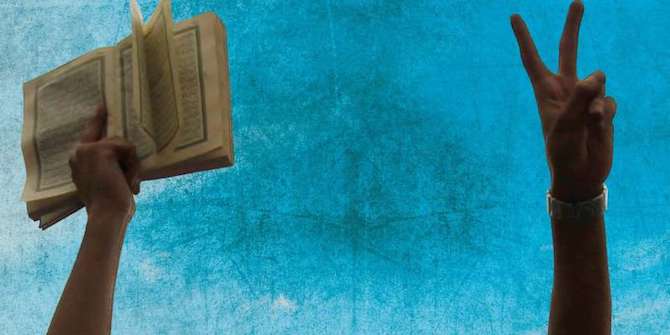
‘The art of rebellion is an everyday battle,’ reads a small caption in a recent book on Iran.
The confluence of art and rebellion transcends mere expression, it serves as an evocative reflection of societal dissent and cultural transformation. Through art, rebellion can find a voice, challenging the prevailing order, and reshaping narratives. In a fusion of creativity and defiance, human expression can flourish, leaving an historical mark – and inspiring generations.
Women Life Freedom by Marjane Satrapi is a compilation of illustrated narratives, from a range of academics, activists, artists and journalists, depicting the current Iranian revolution, employing primarily the medium of graphic narrative to portray aspects that would typically be censored in photographs and films in the country.
On 13 September 2022, Mahsa Amini, a young Iranian student, was detained for alleged violation of the headscarf mandate imposed by the Islamic Republic of Iran. She was subjected to severe beatings and died days later. Protests quickly swept across the nation, with crowds rallying behind the slogan ‘Woman, Life, Freedom’– a chant that echoed across the globe.
Presently, the ‘Woman, Life, Freedom’ movement, the book argues, stands as a valiant and indispensable progression of the ongoing fight initiated in the early 1900s, with women assuming a progressively influential and central position in challenging the systemic injustices against women and others ingrained within a discriminatory structure.
Satrapi says the book aims to decode the intricacies of Iran’s current events for a global audience, though it acknowledges the impossibility of capturing every aspect of the story. Additionally, she wants the stories to serve as a reminder to Iranians that they are not alone in their struggles. The realm of graphic novels provides an apt platform for delving into significant issues.
The predominant utilisation of artwork in Women Life Freedom compels readers to confront events visually. The impact can be deeply unsettling. In a chapter entitled ‘The Winter of Executions,’ by Touka Neyestani and Jean-Pierre Perrin, the faces of men, now deceased, stare hauntingly at the reader, with human legs dangling below their portraits and a black abyss, suspended above a pool of red, with an image of the Ayatollah drowning within it as the pages turn. Later, the radiant 29-year-old Iranian football fan Sahar Khodayari, also known as the ‘Blue Girl,’ is introduced, her radiant face brimming with beauty. Within moments, she self-immolates, depicted amidst vivid flames and then portrayed as a pile on the ground against an ashen backdrop. In ‘Women Saying No,’ by Nicolas Wild and Jean-Pierre Perrin the jarring images of female detainees completely isolated within a stark white room are depicted. ‘The whiteness starts to take over their body, their mind and their soul…and their personality dissolves into nothingness,’ the accompanying text reads.
The prose is sparse but purposeful. Satrapi, renowned for her award-winning work Persepolis, delves into the complexities of Iran’s Revolutionary Guards in a chapter titled ‘Fear and Hated.’ She candidly acknowledges the challenge of depicting their narrative, citing the profound violence she says that they embody, even to the point of experiencing physical strain – ‘finger cramps’ – while illustrating them. Within the graphic panels, intense character interactions unfold with searing clarity. In ‘Dialogue with the Dead’ by Paco Roca and Jean-Pierre Perrin, the poignant exchange between spectral figures explores the value of life, with one asserting the sanctity of individual autonomy, countered by the haunting assertion that ‘to be Iranian is to love death.’ Similarly, ‘The Rich Kids of the Regime’ by Patricia Bolaños and Farid Vahid delves into the theme of ‘Iran’s brain drain,’ encapsulating the longing for prosperity and the harsh reality of departure in an evocative exchange.
Although much of the artwork employs a palette of black, white, and red or somber hues in the paneling, ‘A Party Fraught with Peril’ by Shabnam Adiban and Farid Vahid, presents a vivid contrast with its illustration ‘The Iranian Tapestry,’ which bursts with a spectrum of colors, capturing the rich diversity of cultures and ethnicities within the country.
Throughout the book, there is a pervasive sense of profound despair that resonates with the reader. But the book provides hope throughout, including with this Persian proverb citation, ‘The ocean is made up of single drops,’ noting prior that small acts of rebellion by many, such as riding a scooter, wearing leggings, or painting nails, can lead to change.
Satrapi contends that the primary goal of her comic-book art has consistently been to portray Iranians in a humanising light, and she achieves this again in this publication. The book serves as a solid reminder to readers of the delicate nature of perseverance through political and social upheaval; diverse perspectives and life stories merge ‘Women Life Freedom’ to create a solid narrative.
[To read more on this and everything Middle East, the LSE Middle East Centre Library is now open for browsing and borrowing for LSE students and staff. For more information, please visit the MEC Library page.]






